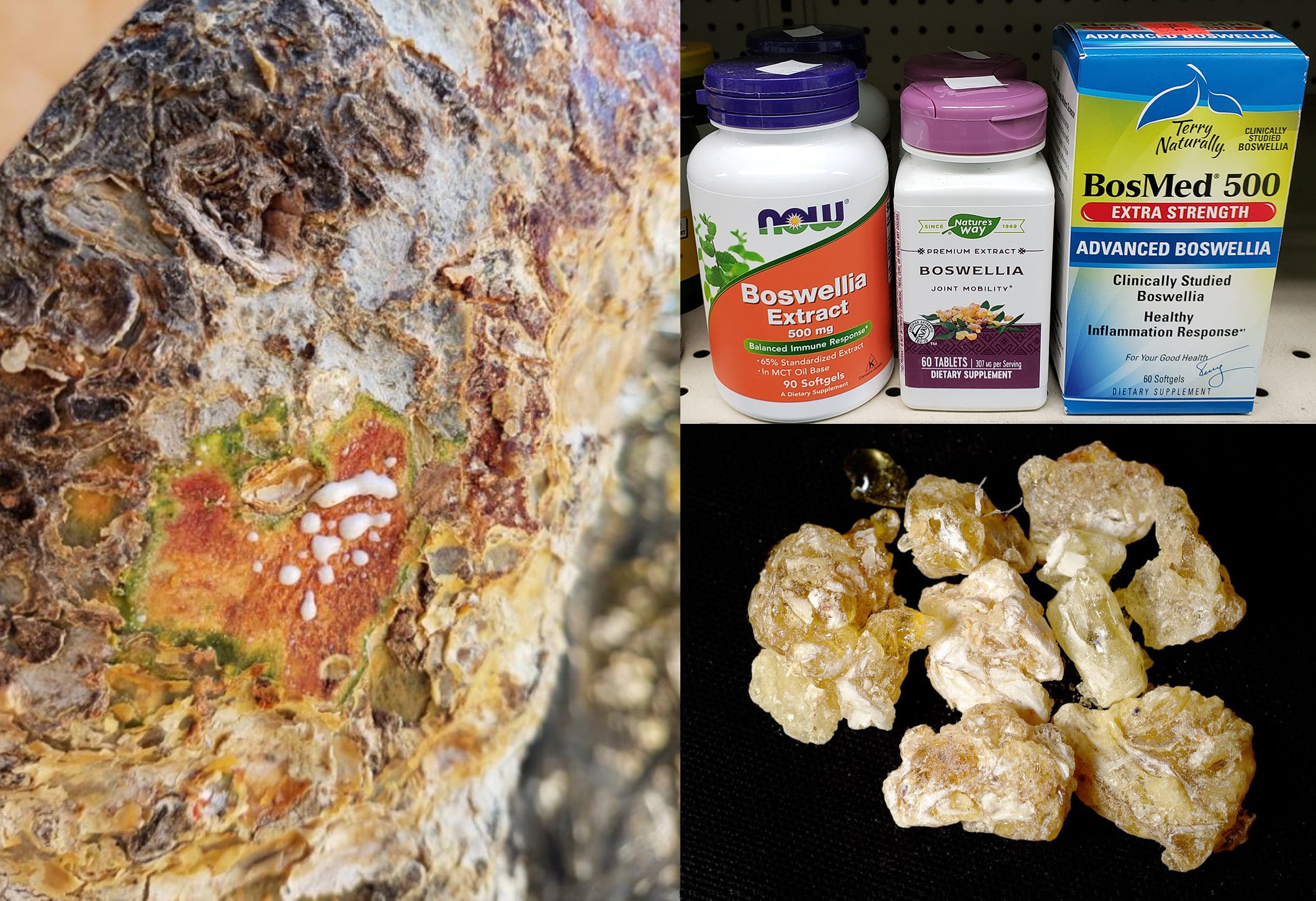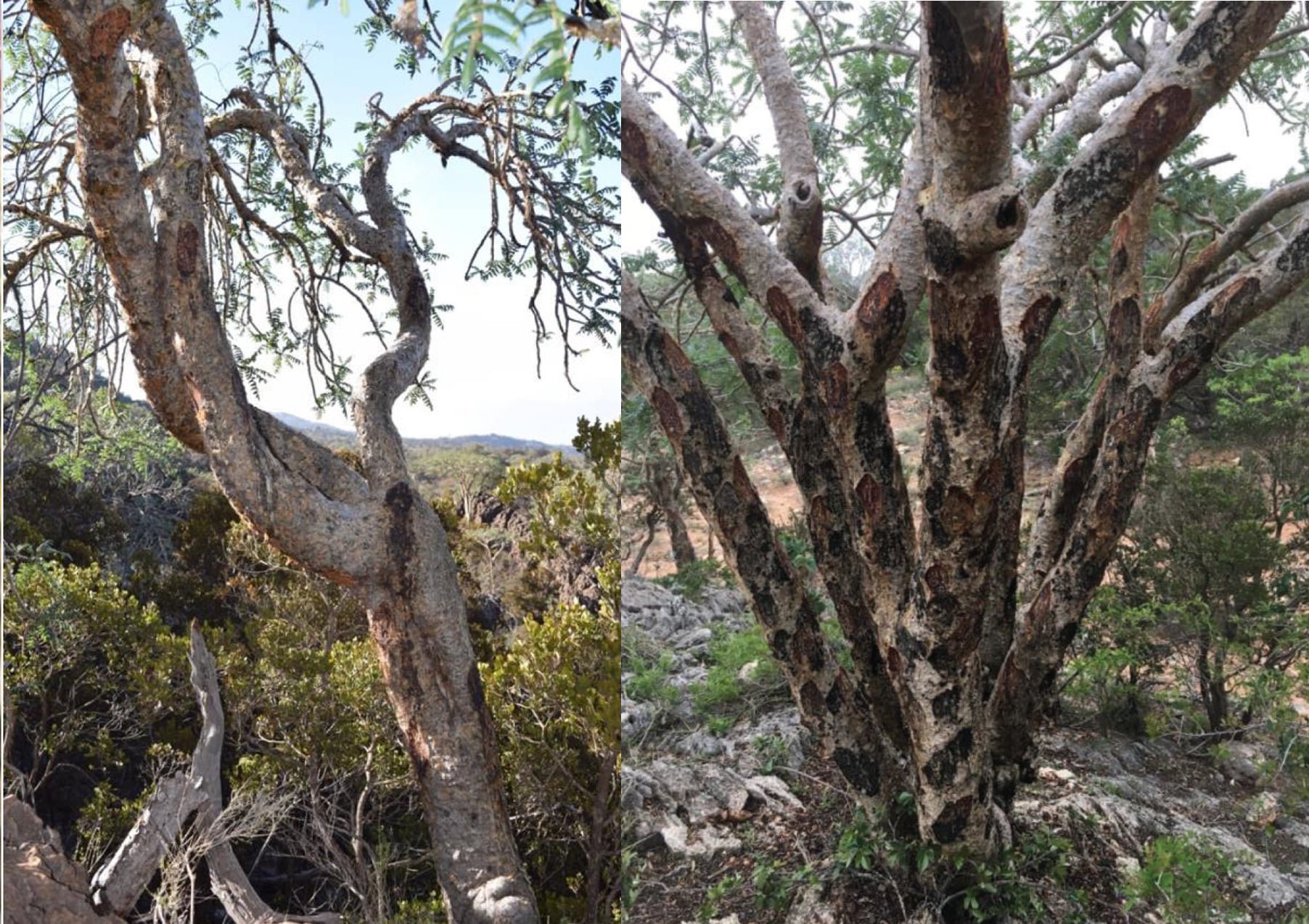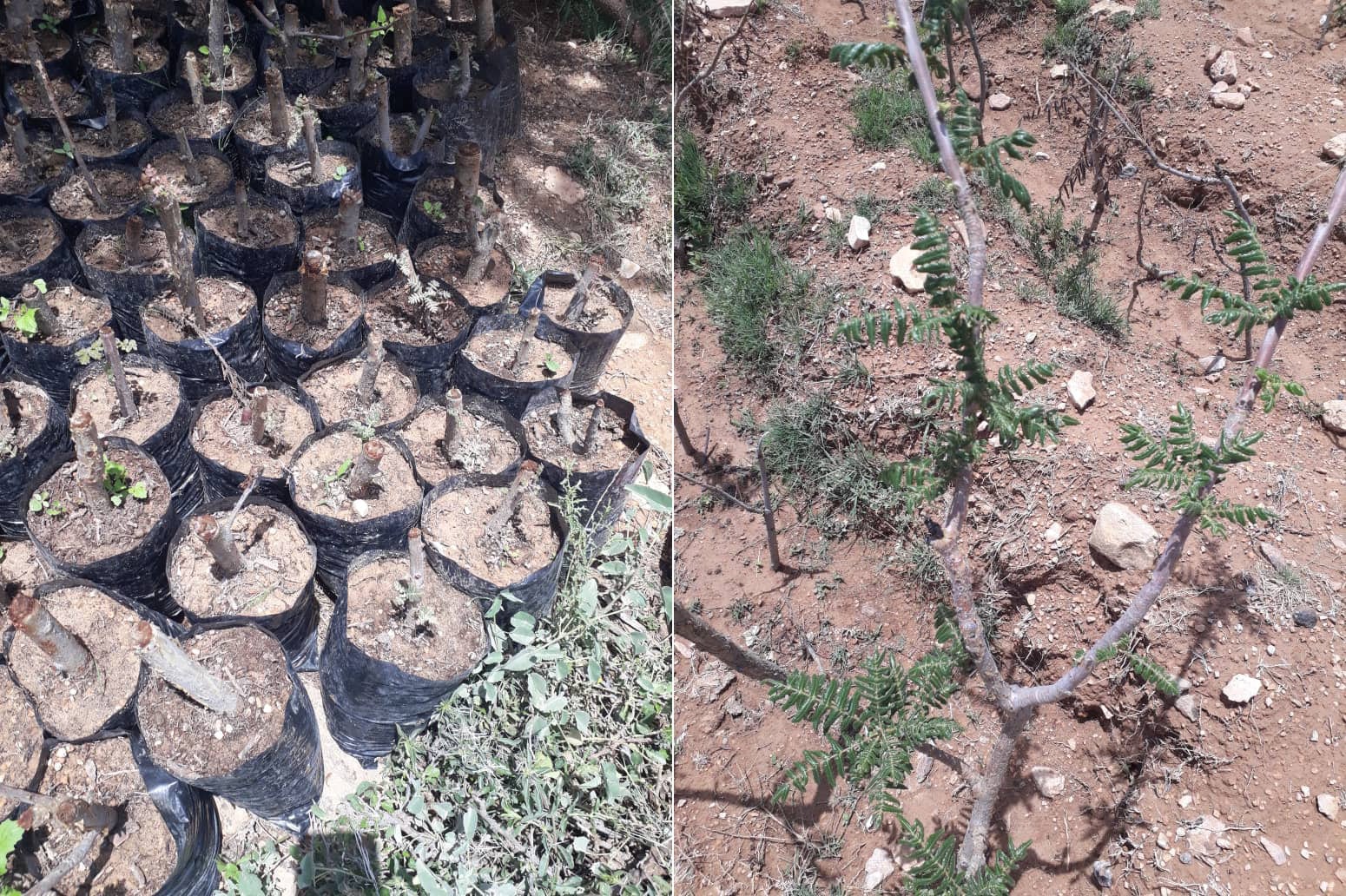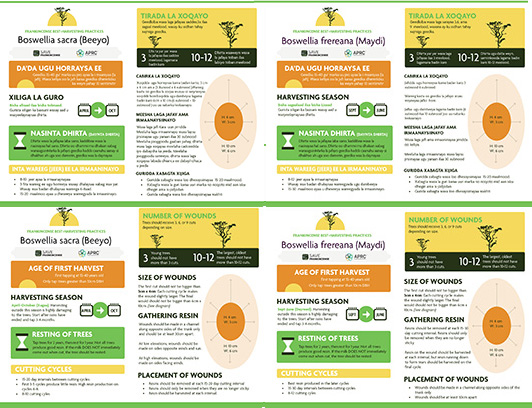resin production for sustainable development
The trees with blue-green leaves are healthy frankincense trees growing in their native habitat. They are protected by their rocky habitat. In many places, they are suffering from over use. The Foundation is working through the Save Frankincense Project, led by Dr. Anjanette DeCarlo, to save the frankincense and myrrh economies from collapse, as both are culturally, economically, and ecologically important for the communities of the Sanaag region in Somaliland.

Frankincense resin
Trees produce resin when they are wounded. The resin helps seal the wound, protecting the tree from further damage. The wounding must be done with care because, like humans, trees recover better from a few small scrapes than several deep cuts. The tree on the left in the picture has been well-managed. It has relatively few wounds. The one on the right has been poorly managed. It has many wounds. Poorly managed trees quickly become less productive and die. Dead trees do not produce resin.

Collecting the resin
Trees produce resin when they are wounded. The resin helps seal the wound, protecting the tree from further damage. The wounding must be done with care because, like humans, trees recover better from a few small scrapes than several deep cuts. The tree on the left in the picture has been well-managed. It has relatively few wounds. The one on the right has been poorly managed. It has many wounds. Poorly managed trees quickly become less productive and die. Dead trees do not produce resin.

Establishing new trees
No matter how well managed, frankincense trees produce less resin as they grow older and they will, of course, eventually die. Because it is best not to harvest resin until a tree is about 7-10 yr old, new trees should be established long before a productive tree dies. New trees can be grown from seed or from cuttings. We are investigating how best to establish strong, young trees using different approaches so that people can choose the approach that best meets their needs.
Files for download
Anjanette DeCarlo and her colleague have developed a booklet on Sustainable Frankincense Production that can be downloaded for free in both English and Somali. They have also developed two posters about the best practices for harvesting resin from Boswellia sacra (Beeyo) and Boswellia frereana (Maydi). They are available in Somali (top row) and English (bottom row). Those for Beeyo are on the left, those for Maydi on the right. They reflect the recommendations of Somalilanders with years of experience in growing Boswellia for resin production.
